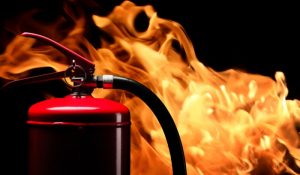 Did you know that a general safety check is included in our Standard Home Inspection? Your engineer will look for safety issues such as handrails, egress windows, smoke and carbon monoxide detectors, etc. While this is not considered a code inspection or an official fire/safety inspection, it will provide you with a lot of information on your future home’s potential safety issues.
Did you know that a general safety check is included in our Standard Home Inspection? Your engineer will look for safety issues such as handrails, egress windows, smoke and carbon monoxide detectors, etc. While this is not considered a code inspection or an official fire/safety inspection, it will provide you with a lot of information on your future home’s potential safety issues.
Whether you are purchasing a single family home or a condominium unit, fire and safety issues are universal. While a board or property manager of a Home Owner’s Association may be focusing on the common element safety issues such as the pool or the walkways and paved surfaces, homeowners’ biggest concerns are typically security and household safety.
For an Association, having a board appointed safety committee is essential and, similarly, a homeowner should have an awareness of safety issues in order to keep their family and home safe. All dwellings, condominiums and single family homes, need to have photoelectric-type smoke detectors in every bedroom and carbon monoxide detectors should be located on every level. Condominium buildings with hallways should investigate the need for self-closing and fire rated doors and hall doors should have proper weatherstripping and sweeps to prevent gaps allowing both smoke migration and fresh air from fueling a fire. Sprinkler systems should be inspected quarterly.
Many communities and neighborhoods would also benefit from an informal training program for homeowners to educate them on where to locate fire alarms, smoke detectors, fire extinguishers, etc, and how to use them. Fire emergency egress pathways should be well understood and posted. It is also useful to arrange an exterior location where everyone gathers following an emergency clearing of the home or building to ensure everyone is safe and accounted for.
A fire safety checklist is an essential tool to not only utilize during your process of purchasing a new home, but also throughout your entire journey of being a homeowner and even a renter!
A typical fire safety checklist:
√ Are all combustibles more than 36 inches away from a wood stove?
√ Do you have smoke alarms near all sleeping areas?
√ Do you have a carbon monoxide detector near all sleeping areas?
√ Do you have a fire extinguisher in the kitchen and garage/workshop area?
√ Are the attached garages separated from living areas by fire-resistant materials?
√ Are all flammable materials stored outside or in well-ventilated areas?
√ Are gas water heaters in the garage up at least 18 inches off the floor?
√ Have all bottled and natural gas fittings been inspected in last 12 months?
Fire safety checklist for egress issues:
√ Do all interior and exterior stairs have a railing on at least one side?
√ Do all porches, balconies, and decks have railings around the perimeter?
√ Are the railings secure, i.e. could they withstand a horizontal force of 200 pounds?
√ Are all balusters and spaces less than 4 inches wide?
√ Are all porch, balcony, or deck railings at least 42 inches high?
√ Are proper egress windows provided for all sleeping areas?
Fire safety is no accident. Safety does start at home. To protect our families we all must turn a critical eye on all elements in the community and how they would function in an emergency. There is no better time to do so than right now.
